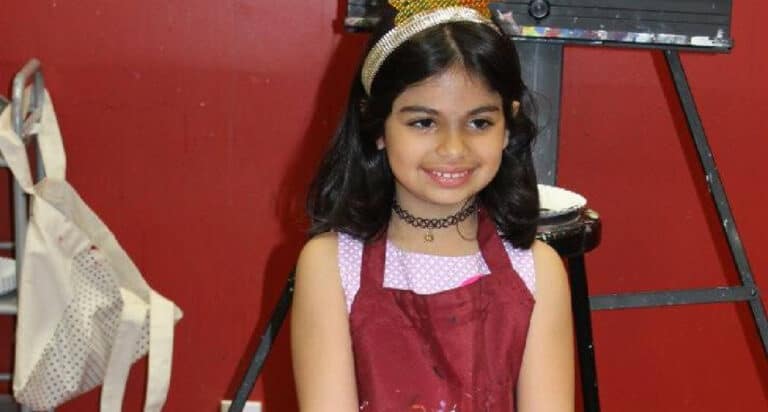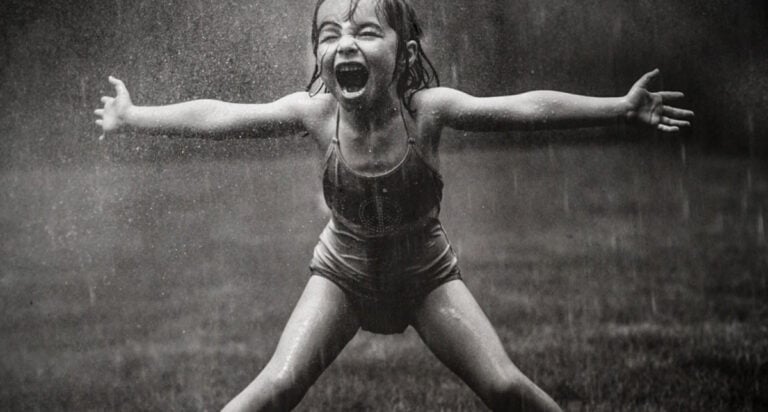When Untangled: Guiding Teenage Girls Through the Seven Transitions into Adulthood first came out in early 2016, I had the privilege of traveling the country to talk with parents about their daughters. In large and small gatherings I highlighted key points from the book and also got to talk with readers about topics that hadn’t been addressed in Untangled. A few questions arose almost everywhere I went, and I’m delighted that with the publication of the paperback edition of Untangled I’m able to share these great questions, and my responses, with you.
Four Questions and Answers about Parenting Teens
1. “It seems like my wife and I play different roles in our teenage daughter’s life. Is this how things usually go in families?”
The short answer to this question is yes, parents in families of heterosexual couples who live in the same home tend to play different parts in the lives of their teenage daughters. In broad strokes, research studies and daily experience suggest that girls have more intense connections with their mothers than they do with their fathers. This goes for both the positive and negative aspects in their relationships.
Girls tend to seek out more intimacy and to share more sensitive information with their mothers. But partly for that reason, the interactions between moms and daughters may also be more combustible than father-daughter relationships. While fathers and daughters certainly tangle with each other, many families find that these conflicts tend to be less intense.
In a pattern that reflects traditional gender roles, mothers usually have a heavier hand than fathers in managing the details of their daughter’s daily life which can lead to greater intimacy and also, more disagreement. For example, a mother and daughter might enjoy a day of back-to-school shopping then go on to have a fight about the girl’s social plans for the weekend.
Any father who feels that he’s missing out on close moments with his daughter, or feels smug because he doesn’t have as much friction with her as his wife does, would do well remember that the intensity of his relationship with his daughter could reflect how much time he spends on the front lines of raising her.
What might parents in this situation do with this information? First, we should remember that when it comes to family life, there’s not one right way to do things. It’s unrealistic, and probably unnecessary, to expect that both parents will be equally engaged with their daughter in all areas of her life. And it’s likely that there are benefits to having parents play different roles. If a girl is in a fight with one parent, the other may be able to step in as a neutralizing force. If a girl is leaning heavily on one parent, the other may be able to offer his or her partner needed moral support.
What about families with a single parent, or families where there are two moms or two dads? Single parents are often pressed to fill all of the roles that two parents cover, and they often do so without the invaluable support of a partner who is equally invested in raising their daughter. I say this every chance I get: if you are a single parent, you deserve as much support as you can find. And if you are the friend or relative of a single parent, have you called him or her lately to see how you can be of help?
In any family with two parents (whether a heterosexual couple or same-sex), there will likely be a division of labor when it comes to raising a teenage girl. From research on teenagers raised by same-sex couples we know that, as with heterosexual couples, girls fare better when they feel cared for by their parents and when both parents describe having a close relationship with their daughter.[1]
2. “I get it that my daughter’s days are long and that she’s cranky after school. I can put up with her snarky behavior, but what am I supposed to do when she’s awful to her younger siblings?”
It’s easy to picture the scene. A fifth grader sits at the kitchen table doing her homework while she eagerly waits for her tenth-grade sister to come home from school. But when the door opens, the atmosphere shifts abruptly. From the way she enters the house, it’s immediately clear that the teenager had a terrible day.
Before anyone can say a word, the teenager turns to her younger sister and snaps, “Did you go into my bag this morning? You know you’re not allowed to, and I didn’t have the highlighter I needed for class.” She adds harshly, “Also, please tell me that you didn’t walk around with your hair like that all day. You look so stupid.”
The teenager then stalks off to her room and leaves one badly bruised sister and one shocked and furious parent in her wake.
What just happened?
What should happen now?
And how do we avoid a repeat performance?
Here’s what happened. The teenage girl wielded an ancient and ugly psychological defense called “turning passive into active.” People who use this defense get psychological relief at someone else’s expense by turning the tables when they are suffering. In our scenario, the adolescent may have felt that she was sorely mistreated all day. This is, of course, highly unlikely, but we know that for teenagers emotions can run high and perspective can be lost.
Feeling that she’s been on the receiving end of mistreatment, the teenager seeks relief by becoming the one dishing out the abuse. Unfortunately, the younger sister found herself in the wrong place at the wrong time.
What should happen now? Ideally, the parent in this scenario would try to stick up for the younger sibling, even as the teenager storms away. It may be sufficient for the parent to say (or shout), “Hey, wait a minute. No one around here treats you that way – you should not treat your sister that way.” Next, the parent might look to give the little sister some support and some context by consoling her along these lines: “You didn’t have that coming, and I’m sorry she went after you. Her days are long and she’s probably stressed, but she has no right to act like that.”
How do we avoid a repeat performance? After some cooling off, the parent might find a moment to touch base with the teenager about what happened. Without expecting agreement, or even a response, the parent could gently say, “Your little sister adores you, and when you’re hard on her, it cuts deep. It would mean a lot to her, and to me, if you’d go out of your way to be kind to her when you’re ready.” In another moment, the parent might add, “I know that your days are hard and that you come home pretty cooked. Got any ideas for how you might blow off some of that steam in a way you won’t feel bad about later on?”
3. “I know that when my daughter is with her friends she watches videos that we wouldn’t approve of. What are we supposed to do about that?”
In the age of digital media, we have to accept that there’s no feasible way to keep our teenagers from viewing material we wouldn’t allow. While this is an uncomfortable reality for any parent who takes the job seriously, there’s a lot we can do to shape what teenagers will make of the content they consume on their own time.
In addition to having age-appropriate media rules and encouraging our daughters to come to us if they encounter material that’s frightening, upsetting or confusing, we shouldn’t hesitate to weigh in on what they watch at home. Though it will almost certainly cue an eye-roll, parents might say, “Wow, this show is pretty trashy,” or “That amount of violence is hard for me to watch.” Voicing high standards helps our daughters question the inappropriate content they will inevitably see when we’re not around.
More than we appreciate, our spoken rules can be powerfully reinforced by the unspoken elements of family life. My parents never made explicit media rules for me and they had no idea what my friends and I were watching, but I knew enough to come slinking home after seeing part of Porky’s while hanging out in the basement with some lucky friend who had HBO. That the movie’s juvenile sleaze was “wrong” and that my parents wouldn’t have wanted me to see it was something that I just knew.
How did I know? Because nothing about Porky’s fit with my experience at home. It didn’t match how my parents treated me, each other or anyone else. It didn’t jibe with the conversations we had over dinner, in the car or during our banal laundry-folding, kitchen-cleaning routines. And it was certainly unlike anything my folks themselves were viewing.
Some of us are also fortunate enough to have our unspoken values reinforced by the adults in our neighborhoods and schools. While I worry about the messages my daughters must be picking up from the media’s pervasive, degrading images of women, I hope they are counterbalanced by the more sensible appearance favored by virtually every woman they actually know. I wish I didn’t have to accept that my girls will see violent media, but I hope that being surrounded by adults who disdain violence and treat it as problematic will keep them from taking it casually when they watch it on a screen.
In the end, all of our communications should cause our daughters to think, “Wow, my parents would not be okay with this” when they encounter inappropriate media. That is probably as good as it gets, and it may be good enough.
4. “Why are today’s teenagers so narcissistic? They’re totally obsessed with making selfies and getting their friends to comment on what they post online.”
Even though we are all ex-adolescents, it’s easy to forget that we, too, spent a lot time when we were teenagers worrying about how we looked. Today’s teens may be preoccupied with their selfies, but their anxious obsession with self-presentation makes more sense when we recall high school mornings when we truly felt that we could not go to school because of a particular pimple. Instead of critiquing girls for devoting themselves to managing the image they project online, we might consider the stress of never getting a break from looking at peers, and from being looked at by them and do what we can to relieve them of that.
For starters, we can give girls some time off from comparing themselves to their peers by enforcing technology-free times for everyone in the home, either around dinner, homework, late at night, or on the weekends. Further, we might follow the suggestion of Dr. Jill Walsh, a researcher who studies the effects of social media on adolescent development, and “engage girls as critical consumers of their friends’ images in the same way we ask them to be critical consumers of popular media.”
Though most teenagers realize that all magazine images are retouched, they forget that they are looking at carefully crafted and selected images of their peers. As Dr. Walsh encourages, we might ask girls, “What do you think of that picture?” or “Why was it taken?” or “Who is it for?” or prompt our daughters in other ways to think about what drives them and their friends to post online images.
Over time, most teenagers pay less attention to their outward appearance and more attention to substantive pursuits. We only need to worry when our daughters spend so much time cultivating their online personas that there’s not enough time left over to develop meaningful interests, skills and capacities that can go on to serve as sturdy sources of self-esteem.
Related:
Don’t Worry, You are Not a Helicopter Parent
Note to Self: On Parenting Teens










